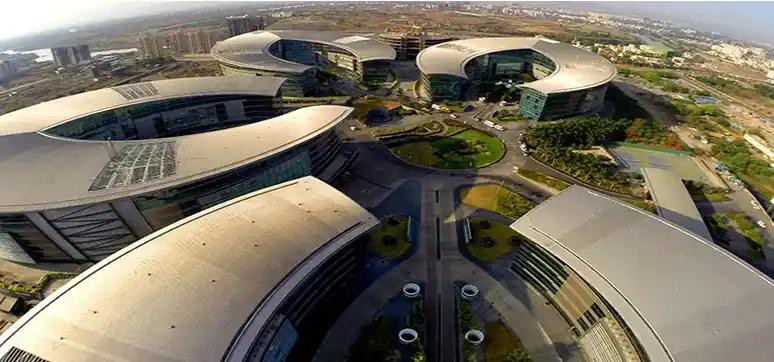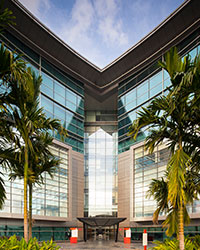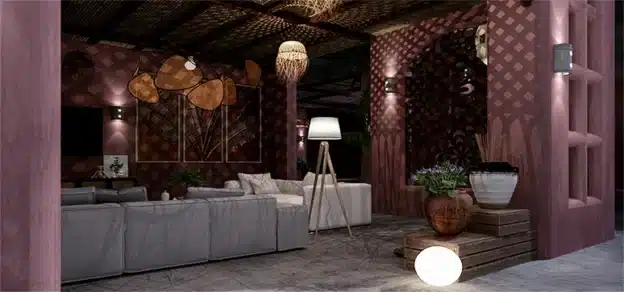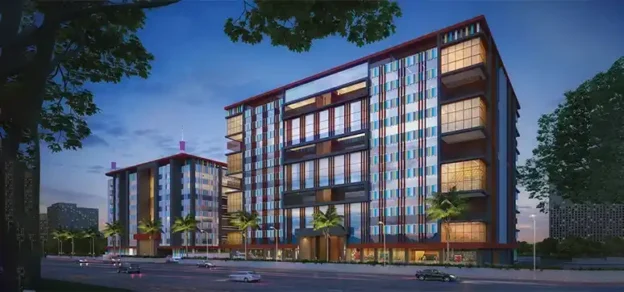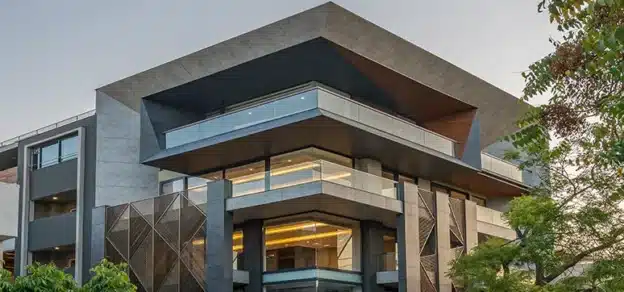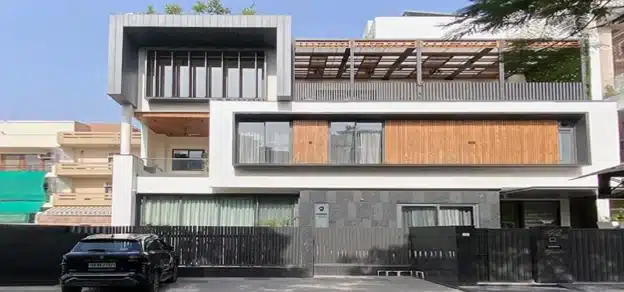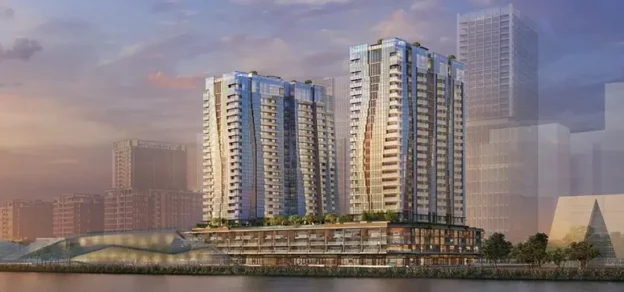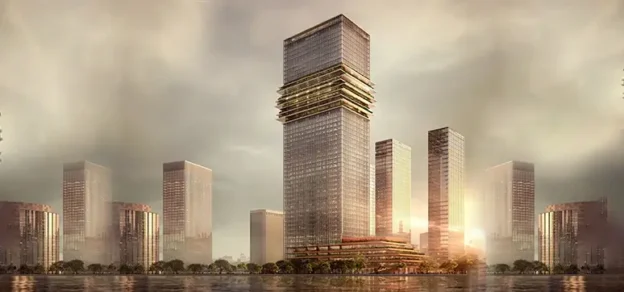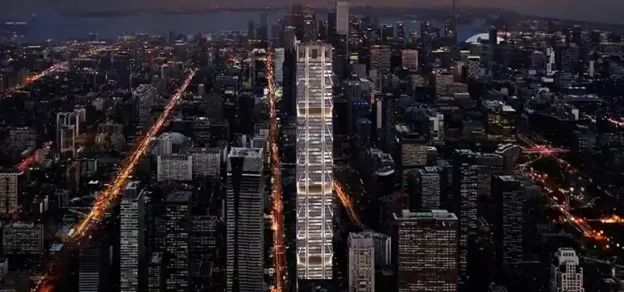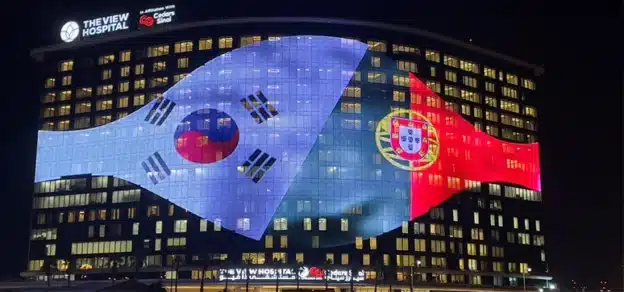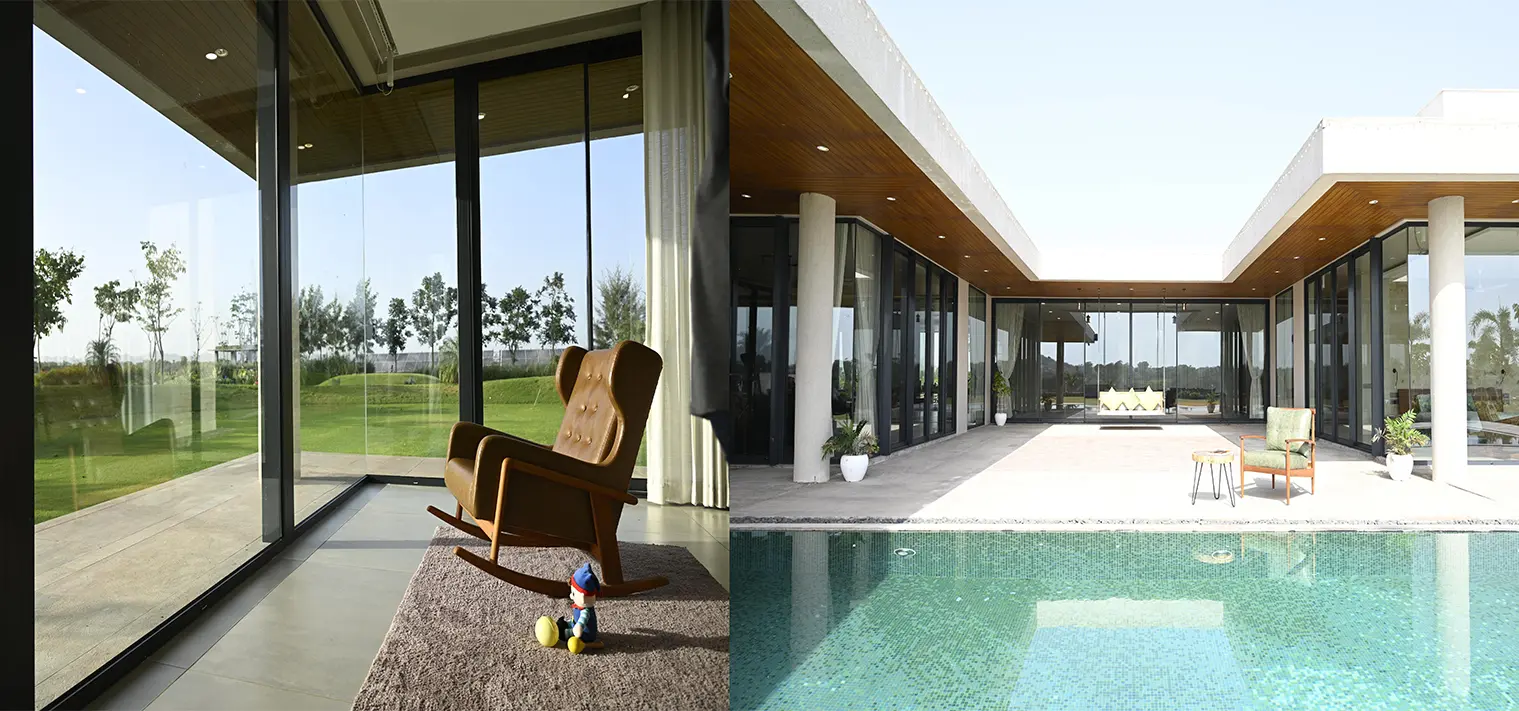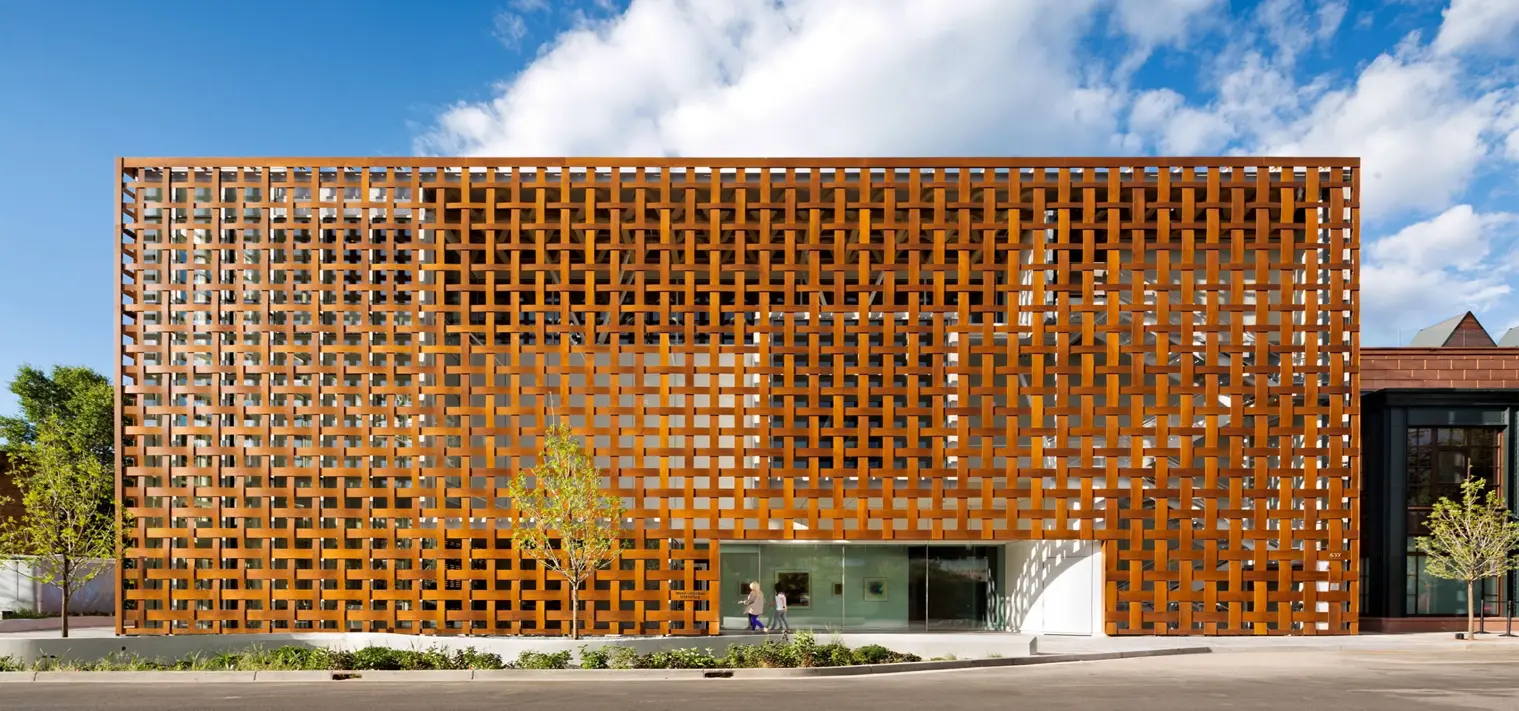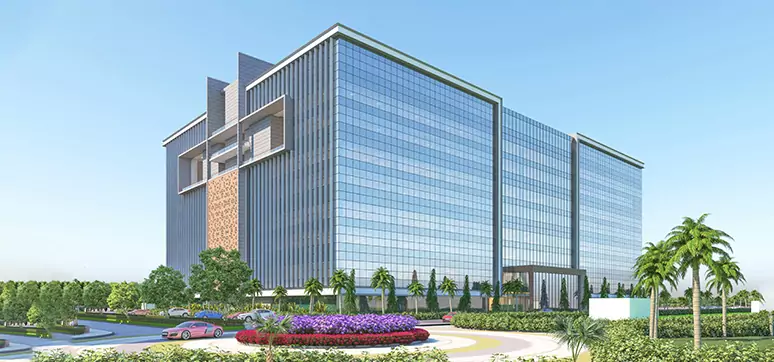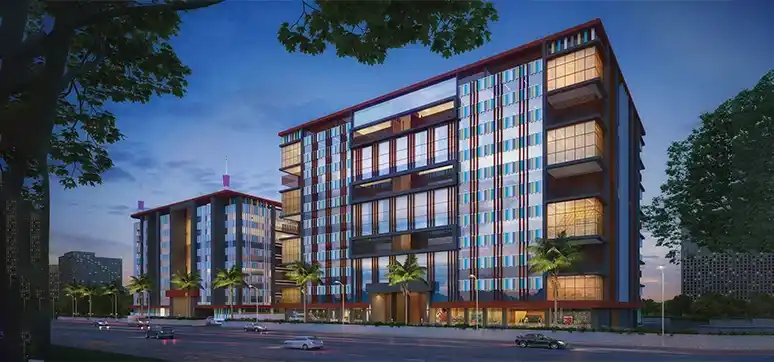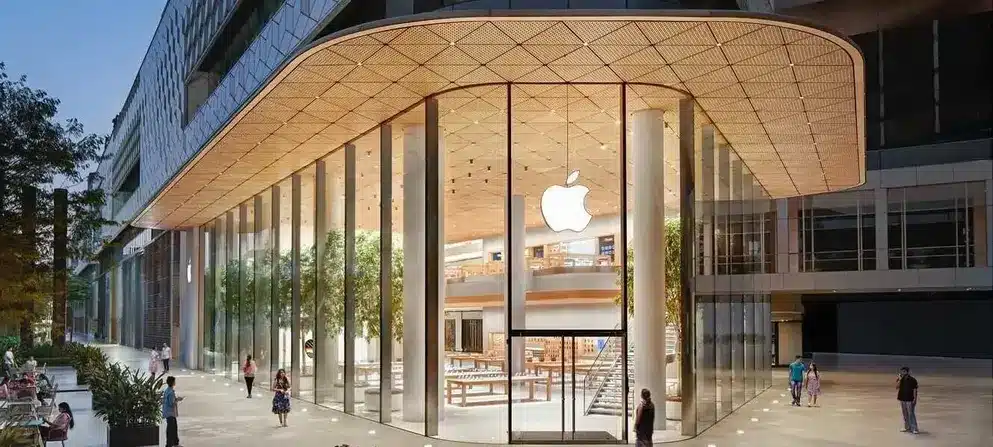Located in the seventh largest metropolis in India, Falling Lotus Blossoms: EON IT Park is an elegantly arranged quartet of buildings, totalling 400,000 sq m, that occupy a site located in the EON Free Zone, a Special Economic Zone established by the government to encourage development. This 21st century workplace, which sets a grand scale in counterpoint to the rugged Indian countryside, overlooks a river and the fields beyond on a flat site that was previously almost entirely untouched.
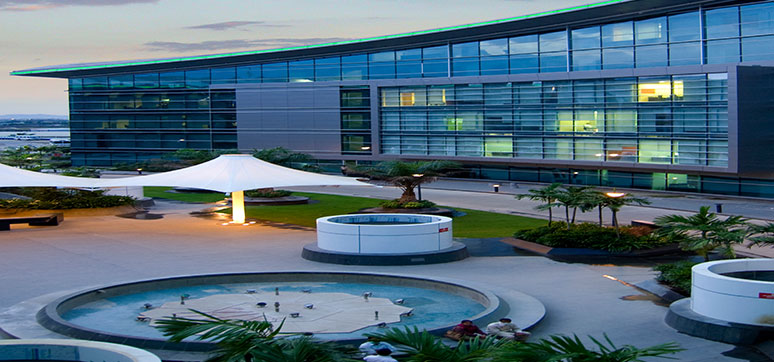
The Steel and Glass Buildings Received LEED Gold Status Form4 Architecture began the design as different iterations of the petal shape from India’s national flower, the white lotus. Ultimately, four “petals” were arranged like a four-leaf clover in plan with an open space at its centre. In part, a response to the extreme heat and humidity and the goal of populating the outdoor spaces for more than just a few months of the year, the buildings themselves contain semi-conditioned, shaded atrium spaces that serve as meeting or gathering areas for the building occupants. At dusk, each courtyard morphs into a giant kaleidoscope by the delineation of building elements with neon lighting.
The steel and glass buildings received LEED Gold status, in part, due to the double-glazed high-performance glass walls. A 20.09 per cent energy savings (against the ASHRAE base case) is a result of additional energy conservation measures incorporated into the project, including under-deck insulation in the roof, efficient lighting design, occupancy sensors, wall insulation, and a Variable Refrigerant Volume (VRV) system in office areas.


Raised on the ground plane, the complex picks up a teleological dimension in that it becomes a quasitemple devoted to the future of technology and its own iconography. As the eye follows the sweeping shape of the roof line, a vivid image of the fluid plane emerges. The building opens up and embraces the users of a new society. This iconic project, both in its construction phase and completion, exemplifies technology as a trans formative force for the language of architecture in a fast-growing country like India.
Architecture is inherently sustainable when the design intent springs from a genuine commitment to the betterment of society. This ideal was applied to the Falling Lotus Blossoms project, resulting in a LEED Gold rating. The strategy included addressing energy needs, water use, waste, materials, and heatisland effect.
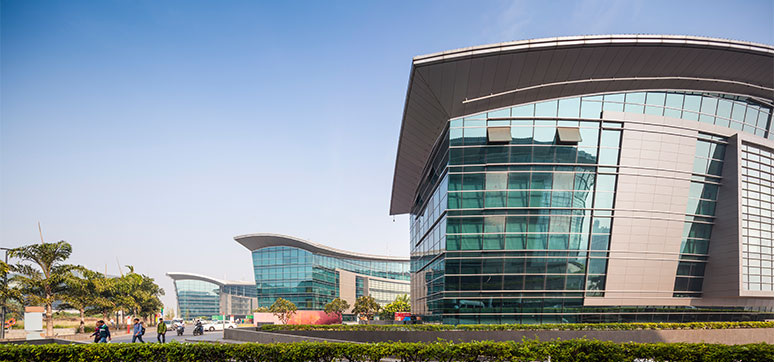
The Project Achieved:
-
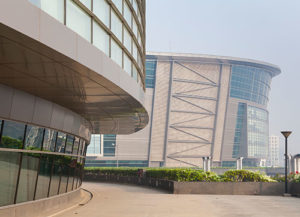
-
- 100 percent of the wastewater generated at site is reused in landscaping. An on-site sewage treatment plant (STP) treats the water for reuse.
-
- 98.18 percent of construction waste was diverted from landfills. Waste diverted from landfills includes reinforcement steel, cement bags, plastic, broken tiles, paint cans, cardboard, aluminum scrap, concrete cement, and broken bricks.
-
- 100 percent underground parking. To
assist in the reduction of a heat-island effect, all 2,226 car parking spaces and 202 two-wheeler spaces are underground. Electric charging stations have been provided for 67 car parking spaces and six two-wheeler parking spaces.
- 100 percent underground parking. To
-
- 100 percent roof coverage. The project used high solar reflective index (SRI) materials to cover 100 percent of the 145,000 sq ft of roof area.
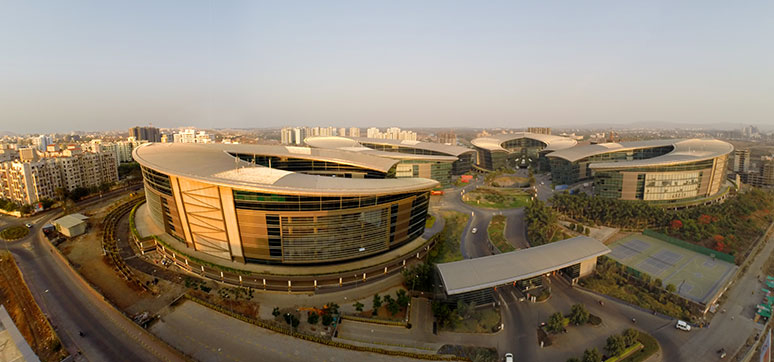
QUICK FACTS
Project: Falling Lotus Blossoms: EON IT Park
Location: Pune, Maharashtra, India
Client: Panchshil Realty
Architect: Form4 Architecture
Local Architect: NPAPL Architects
Materials used for façade and fenestration: glass
and metal
Commencement Date: 2005
Completion Date: 2014
Area: site-45 acres; building area-400,000 sq m
equally in 4 buildings; building footprint-67,000 sq
m; number of floors – 6; building height-27 m
